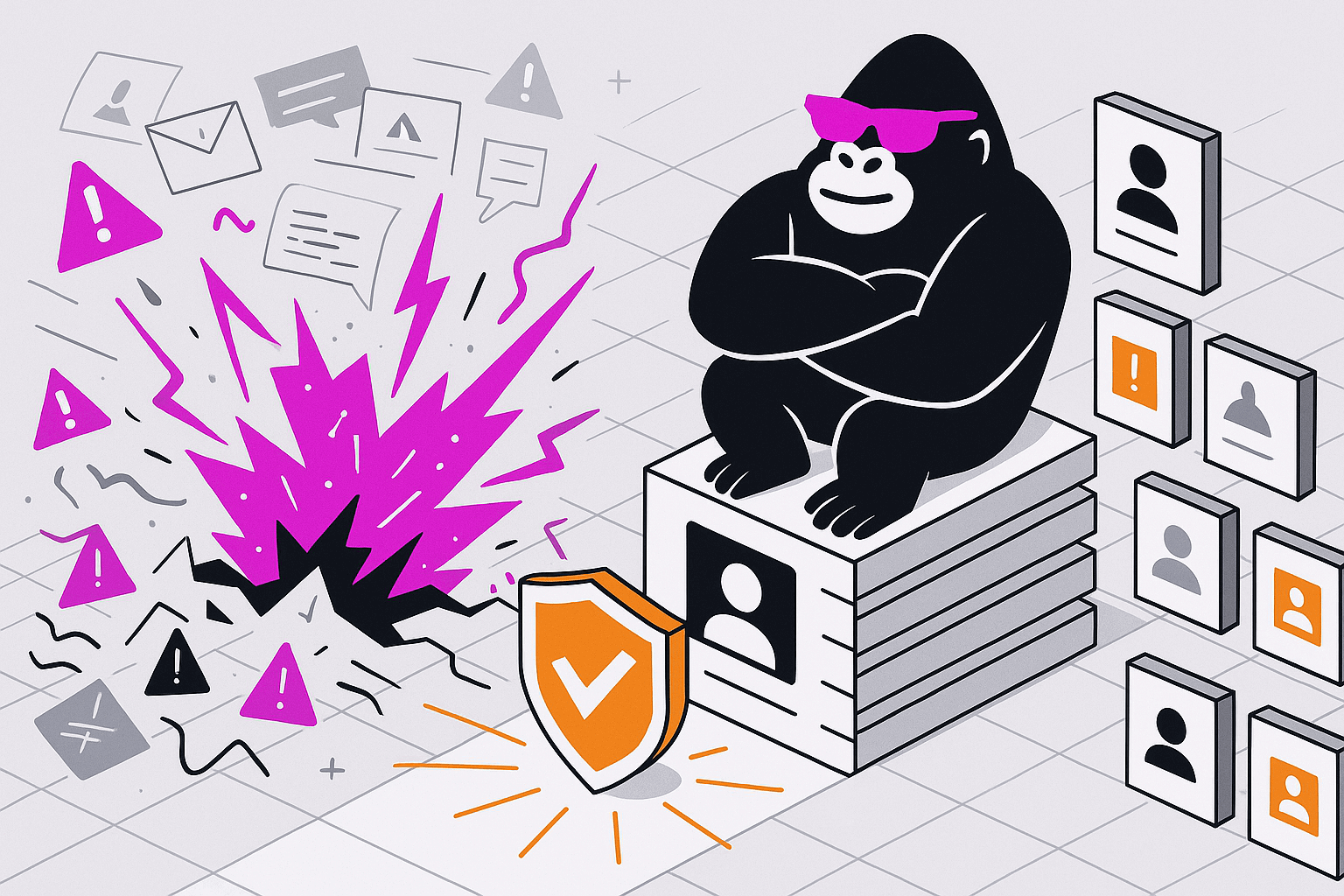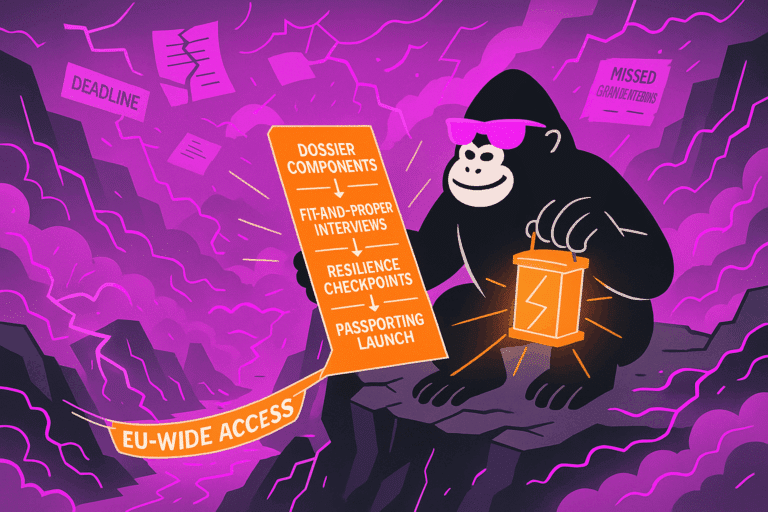I’ll admit it: figuring out personnel screening for SOC 2 compliance sometimes feels like teaching squirrels to juggle—entertaining in theory, chaotic in practice. Yet, without robust background checks, you’re essentially handing your most sensitive systems over to the unknown.
In this guide, I’ll show you why background screening is the unsung hero of SOC 2’s Trust Services Criteria, outline a bulletproof program that keeps auditors happy, and share how to pick a vendor that won’t leave you mid–audit with sweaty palms.
Why background checks are nonnegotiable for SOC 2 compliance
Under SOC 2’s Trust Services Criteria—specifically Security (CC 2.0)—you must safeguard systems and data against unauthorized access. Background checks verify identity and integrity, turning vague trust into documented assurance. In my years leading security teams, I’ve found that vetting people early prevents you from having to play Whac-A-Mole with insider risks later.
Plus, role-based access controls hinge on knowing exactly who deserves which keys. If you grant production-server privileges without checking someone’s history, you’re asking for trouble. Background screening ensures that the person behind the admin account isn’t hiding a red flag.
PRO TIP
Tie your background-check policy directly to your access-control matrix. For any role granting “write” or “admin” privileges, mandate a criminal-record search and identity verification before privileges are assigned.
Core components of a SOC 2–aligned screening program
While SOC 2 doesn’t mandate a specific checklist, most organizations build their screening around these essential elements. Think of each component as a layer in your onion of trust—tear one away, and you’re crying (for all the wrong reasons).
| Component | Purpose | Typical Scope |
| Identity verification | Confirms candidate’s authentic identity | Government-issued ID, Social Security number or national ID checks |
| Criminal-records search | Uncovers convictions, warrants, or disqualifying offenses | County, state, and national databases |
| Employment & education verification | Detects resume fraud and validates credentials | Former employers, academic institutions |
| Reference checks | Gathers qualitative insights on character and performance | Professional contacts provided by the candidate |
| Credit check (optional) | Reveals financial risk factors, crucial for finance-handling roles | Major credit bureaus (where legally permitted) |
| Global watchlists | Screens against sanctions and Politically Exposed Persons lists | OFAC (Office of Foreign Assets Control), EU sanctions, PEP lists |
Each of these checks peels back another layer, giving you a comprehensive view of who you’re inviting into your digital fortress.
PRO TIP
Use a single spreadsheet or your HRIS to track completion status per candidate and check type. Add conditional formatting to flag missing reports so nothing slips through when auditors request a random sample.
What auditors expect to see in your background-check evidence
When an auditor dives into your SOC 2 assessment, they’ll sample employees with defined system access—developers, operations staff, maybe that one person who knows every admin password. For each person, be ready to provide:
- Completed screening reports. Auditors confirm checks were finished before access was granted.
- Policy and procedure documentation. You need a formal, written hiring-screening policy detailing scope (employees vs. contractors), check types, and frequency (e.g., re-screen every two years for long-term staff).
Having these artifacts on hand not only speeds up the audit but shows you’ve institutionalized personnel security across your organization.
Embedding background checks into your hiring workflow
In my experience, a documented policy is a good start—but automation is where you stop chasing your tail. Follow these best practices to lock in consistency and audit readiness:
- Formalize your screening policy. Write down who’s in scope, which checks are mandatory, how often you re-screen, and how you handle adverse findings.
- Choose a single, reliable vendor. Consistency in process and reporting saves you from “vendor shopping” panic during audits.
- Log exceptions meticulously. If you override a finding, record the risk assessment, rationale, and approval. No hand-waving excuses.
- Integrate with HR systems. Automate check triggers so no one gets credentials before clearance. Think of it as a seatbelt for your onboarding process—no buckle, no ride.
By baking these steps into your HR pipeline, you ensure that background checks are automatic gatekeepers rather than afterthoughts.
PRO TIP
Integrate your screening vendor via API to trigger checks automatically when a candidate’s status changes to “offer accepted.” This prevents manual handoffs and ensures no one spins up credentials before clearance.
Streamline your SOC 2 compliance with CyberUpgrade
SOC 2 compliance demands airtight controls, clear evidence, and proof that your security measures truly work under scrutiny. CyberUpgrade offers predefined, customizable workflows aligned with Trust Services Criteria that automate tasks like background checks, access reviews, and incident logging. Real-time Slack and Teams prompts guide your team through every step, slashing manual effort by up to 80% and ensuring no control gets overlooked.
All compliance evidence—from vulnerability scans to MFA logs—is centralized in an audit-ready repository, making it easy to satisfy both ongoing monitoring and “separate evaluation” requirements under CC 4.1 and CC 7.1. Built-in risk assessments, pen-testing integrations, and continuous monitoring shore up your defenses, while our fractional CISO service provides expert guidance and strategic leadership.
With CyberUpgrade, you’ll not only meet today’s SOC 2 standards but build a scalable, future-proof compliance program—so audits become confirmation, not chaos.
Reinforcing trust into 2025 and beyond
Shoring up personnel security isn’t a one-and-done checklist—it’s an evolving commitment. As threats morph and regulations shift, revisit your screening policy, explore emerging verification techniques, and treat each audit as a chance to refine your controls. Because in compliance, standing still is the fastest way to get left behind—and nobody wants that.









